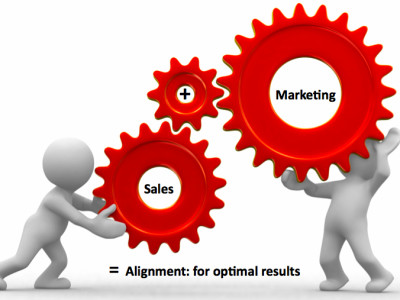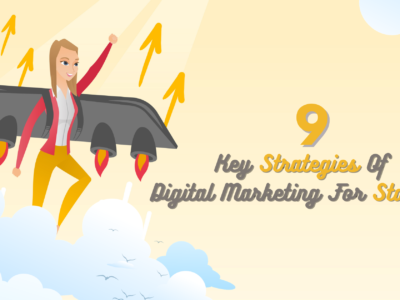
7 Key Components You Should Have Before Starting Your Paid Digital Media Campaign

Now-a-days for any business to succeed, they need to make their presence online, true isn’t?
Sign up to get FREE CRM Trial
These days we are hearing a lot about digital media and marketing online, the businesses that are investing into these marketing channels are growing digitally and gaining profitable returns too.
Hence paid digital advertising became the most important marketing strategy for all target markets, and whether you’re just about to start your first paid media campaign or you’ve been at it for years, there’s always more you can learn to improve your strategy.
You need more than just a budget in place before starting paid digital media advertising—that is, if you want your paid digital media campaign tests to have the best structure in place for success. Whatever platform or platforms you’re planning on allocating spend to, set yourself up for success by having these things in place before spending your first penny.
1. Goals and Objectives
Your goals should be clear, simple and defined. Determine how the paid media platforms you’re using and the campaigns you plan to run fit into the organization’s short- and long-term goals. It’s okay to not know exactly what to expect when testing a new platform or campaign or type of ad, but having high-level company goals to compare results to is a must.
You may have ideas for what is going to work best for your audience based on past experience with your ads, but taking the time to conduct thorough research and have data to support your actions is important. You may anticipate that your customers will behave a certain way, when in fact they go in a completely different direction. It’s essential to be prepared for this ahead of time and use the information you collect from research to plan your marketing strategy.
With a broad objective in mind, you can then start thinking about specific, granular goals that’ll directly inspire your day-to-day social activities. The top goals for most digital media marketing programs are:
- Building brand awareness
- Getting website traffic
- Lead generation
Whatever goals you choose need to align with various metrics that you can use to measure your success later on. Without goals and associated metrics, you won’t be able to measure ROI, and determine if your efforts are actually effective.
2. Clearly Defined Buyer Personas
The core of effective digital marketing is about speaking to a specific audience with your posts or ads. And unless you have an intuitive idea of who your target audience really is, you’ll need to create audience personas. Fully grasping who your audience is, and how-to best market to them is critical. You need to know who you want your buyers to be before you try to market to them. This is an important step in any marketing strategy whether it be on or offline, and it is a clearly defined aspect of your brand that you can keep referring back to.
When it comes to digital advertising it is important to remember that for any business to be effective, they need to know who their audience is, which social media sites their audience spend time, and then they have to make sure to be able to provide content for the platforms their audience spends time on. When it comes to marketing through paid media, because you will always refer to your buyer personas when building audiences.
Google allows you to target your audience based on interests of your audience. This is why it’s important to have a defined target audience, you have to know what they like to do and what they want so you know how to create content that will capture their attention.
3. Content that Your Buyer Personas Actually Want
Already have a guide or other valuable piece of content for your primary buyer personas? Or have you been putting off creating one? Now would be a great time to get that ready to use with your paid campaigns. If you’re initially trying to prove that paid media is a viable channel for your organization, it’s an especially good strategy to have a valuable content asset in place to build paid media campaigns around. Be sure to tailor the content, landing page, and follow-up workflow to the specific buyer persona you’re targeting with the ads.
Content is king, and will always be. Creation of content (like blog posts, videos, photos, social media posts, etc) and sharing it on different online platforms for brand awareness, lead generation, growth of traffic, gaining more customers or building reputation; is mainly called as content marketing. Precisely, this marketing is done implicitly to gain interests of the customers with the help of content, without promoting the business directly.
Create content that evokes awe, excitement, or amusement to encourage engagement and shares. People like to share content that they think might be helpful or educational for others. One study has found that people like to share useful content to help others, for self-help, and for social exchange. So, find a way to offer something of value to your social followers. Create compelling social content and develop a powerful strategy to promote it.
4. Optimized Landing Pages
It is the online address of your business/brand, having a proper optimized landing page is very important for success of your online marketing strategy. Make sure that your landing page satisfies the following must-haves:
- The landing page has to be user-friendly.
- Should speak about your business/brand.
- Include all essential contact information.
- Design should be professional, clean and easy to navigate.
- Page should be responsive.
- Compelling CTA button
It doesn’t matter how much qualified traffic you send to a landing page if no one is converting on it. Before you spend ad dollars, audit your site—with special attention to your landing and thank you pages—and make any necessary improvements. Use heat mapping software to analyze visitor behavior and make informed decisions around page optimization.
Most importantly, tailor landing pages to the persona you’ll be targeting with your ad campaigns. This might include duplicating a landing page for each primary persona so that the copy and images speak directly to them. Your ad creative, landing page, and any follow-up should all be tailored to the persona you’re targeting with the campaign.
5. Follow-Up Workflow for Lead Nurturing
As part of your campaign strategy, determine what content you want these new leads to see as a follow-up. First step: Make sure that, if they’re downloading a content offer, they receive a thank you email with a direct link to the asset. Then, think about the typical path to purchase (or whatever the end goal is for this persona) and tailor the follow-up workflow accordingly.
You need to start milking your database. Don’t just let your contacts and leads seat there. Reach out to them regularly using different touch points (web pages, social contents, email etc.) to entice them to buy / convert. For bottom of the funnel campaigns such as “request a consultation,” you should use automated follow-up workflows to notify the proper team member so that they can respond in a timely manner.
Your website visitors and leads expect more. Truly understanding your personas will help you better craft your lead nurturing from email subject lines, landing page copy, e-book titles, and more, so your content genuinely resonates with the right people. Remember: that you shouldn’t make assumptions about your personas. Your lead nurturing content—and all content for that matter—should be made based on research and known facts.
6. Resourcing / Team Building
Research shows that while actually developing a paid digital media strategy is more difficult for small businesses, enterprise companies also face significant challenges in securing enough internal resources to make it happen. This is probably because businesses are more open to the idea of outsourcing to build their teams.
Your big decision here is deciding if your internal staff will head your social media marketing strategy, or if you’ll outsource the work. You could utilize a combination of both. But finding someone who will develop social campaigns that speak to your target audience is a bigger task.
Some of your social media marketing tasks will be easier with the help of tools – for example, PicMonkey and Canva are photo editing tools you can use to make your visual social media posts. Here are some other tools you can use to simplify social media campaigns for you or your team:
- Blog aggregator tools
- Social media automation tools
- Social following tools
Make sure that more than one employee has administrative access to the relevant assets. This will lessen the risk of losing your company’s ad account and/or pages in the event that an employee leaves the company, loses their access, or is out of the office when you need to make changes.
7. Integrating with Analytics
Paid digital media marketing isn’t all about brand awareness. More than half of marketers using social media say it helps improve sales, which is why it’s important to integrate paid media marketing into your larger digital marketing strategy to get the most out of it.
Analytics tracking is one of the most important things you can do to improve your paid media marketing strategy over time. Tracking analytics gives you a detailed picture of what kind of content and promotion strategies work – along with the ones that don’t – enabling you to adjust and improve.
Thanks to tracking tools like Google Analytics, it’s easy to attribute web traffic and site behavior to different marketing channels. This data will help you visualize how to make these different strategies work together to achieve your overall marketing goals.
Measuring ROI will likely require you to look at big-picture data, as well as engagement metrics. This all goes back to your original marketing goals and associated metrics – how well have your various paid media campaigns helped you achieve them?
Conclusion
Just remember that a successful paid digital media marketing strategy is ongoing – pay attention to your goals and analytics, then adjust as you go along. This will ensure that down the road you’ll continue to get better at engaging your target audience. if you are still thinking whether to invest your time in digital marketing for your business or not, then you are definitely wasting your time thinking, Contact us Immediately!


